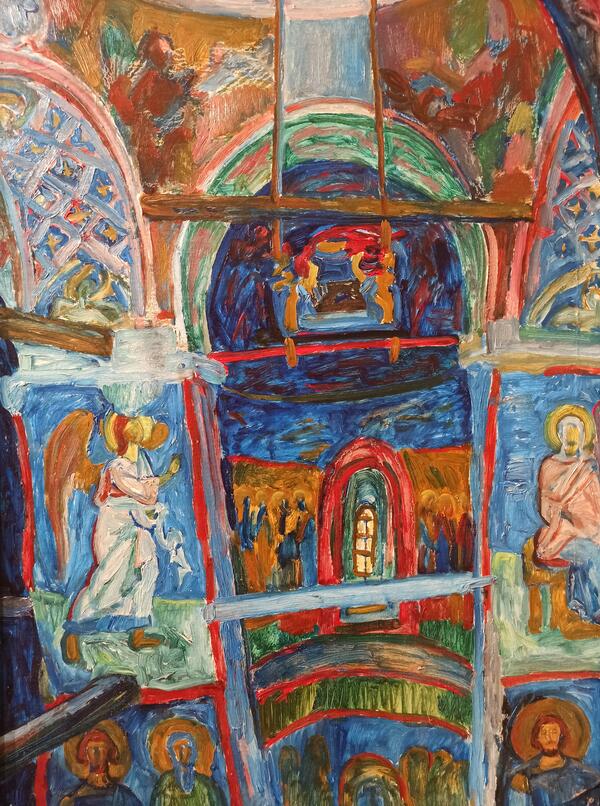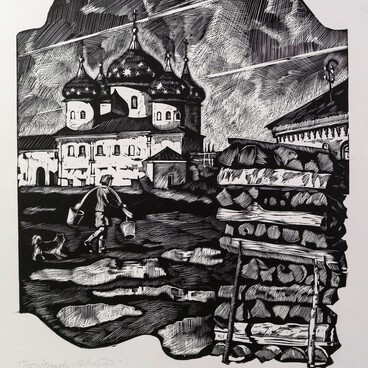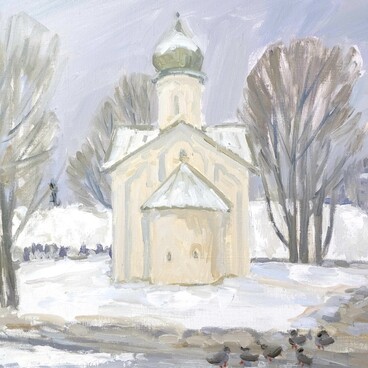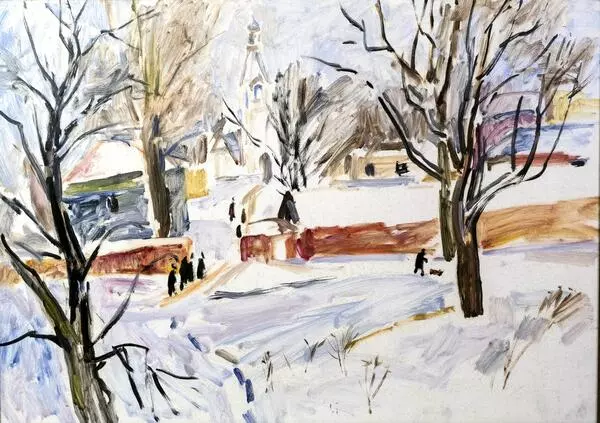The 12th-century Antoniev Monastery (the St. Anthony’s Monastery) is one of the oldest monasteries erected in the vicinity of Veliky Novgorod. There is contradictory information in historical sources on the exact date of its foundation: the Novgorod Third Chronicle indicates that it was built in 1116–1122; according to the Novgorod First Chronicle — in 1117–1119.
The prominent architects-restorers and specialists in the field of Old Russian architecture, Leonid Yegorovich Krasnorechyev and Grigory Mikhailovich Shtender carefully examined this complex and came to the conclusion that its construction was carried out in several stages.
The cross-domed Church of the Nativity of the Theotokos with four piers, three aisles and an adjacent narthex (on the west side) is among the most ancient Novgorod monuments of the princely era. A staircase tower is located at its northwest corner.
The rest of the buildings are more recent: the porch and chapels were built in the 17th century, the storeroom and the sacristy — in the 18th century. The hemispherical domes of the 12th century are now covered by onion ones, which appeared during renovation works in the 18th and 19th centuries.
Original frescoes from 1125 have been preserved among other wall paintings — they adorn the altar part, the altar pillars, the staircase tower and parts of the western wall. The rest of the church was painted by the masters of Gerasim Verigin’s artel in 1837. According to the art historian and restorer Vladimir Dmitrievich Sarabyanov, the frescoes of the Church of the Nativity of the Theotokos echo the style of Byzantine painting of the Comnenian era. This period (the 11th–12th centuries) is considered the heyday of Byzantine art. Sarabyanov sees similar features in the wall paintings in the Byzantine provinces, including Cyprus. This style is characterized by a Greek sense of harmony, enlarged forms, elegance, expressive and highly spiritual images, and saturated color palettes.
The Nativity Cathedral was distinguished by its rich décor. The unique frescoes were complemented by icons, revetments of liturgical books, woven veils, vessels used during liturgies, corona lucis (church chandeliers) and other valuable utensils. A special role in the interior of the church belonged to the altar rail.
The prominent architects-restorers and specialists in the field of Old Russian architecture, Leonid Yegorovich Krasnorechyev and Grigory Mikhailovich Shtender carefully examined this complex and came to the conclusion that its construction was carried out in several stages.
The cross-domed Church of the Nativity of the Theotokos with four piers, three aisles and an adjacent narthex (on the west side) is among the most ancient Novgorod monuments of the princely era. A staircase tower is located at its northwest corner.
The rest of the buildings are more recent: the porch and chapels were built in the 17th century, the storeroom and the sacristy — in the 18th century. The hemispherical domes of the 12th century are now covered by onion ones, which appeared during renovation works in the 18th and 19th centuries.
Original frescoes from 1125 have been preserved among other wall paintings — they adorn the altar part, the altar pillars, the staircase tower and parts of the western wall. The rest of the church was painted by the masters of Gerasim Verigin’s artel in 1837. According to the art historian and restorer Vladimir Dmitrievich Sarabyanov, the frescoes of the Church of the Nativity of the Theotokos echo the style of Byzantine painting of the Comnenian era. This period (the 11th–12th centuries) is considered the heyday of Byzantine art. Sarabyanov sees similar features in the wall paintings in the Byzantine provinces, including Cyprus. This style is characterized by a Greek sense of harmony, enlarged forms, elegance, expressive and highly spiritual images, and saturated color palettes.
The Nativity Cathedral was distinguished by its rich décor. The unique frescoes were complemented by icons, revetments of liturgical books, woven veils, vessels used during liturgies, corona lucis (church chandeliers) and other valuable utensils. A special role in the interior of the church belonged to the altar rail.





